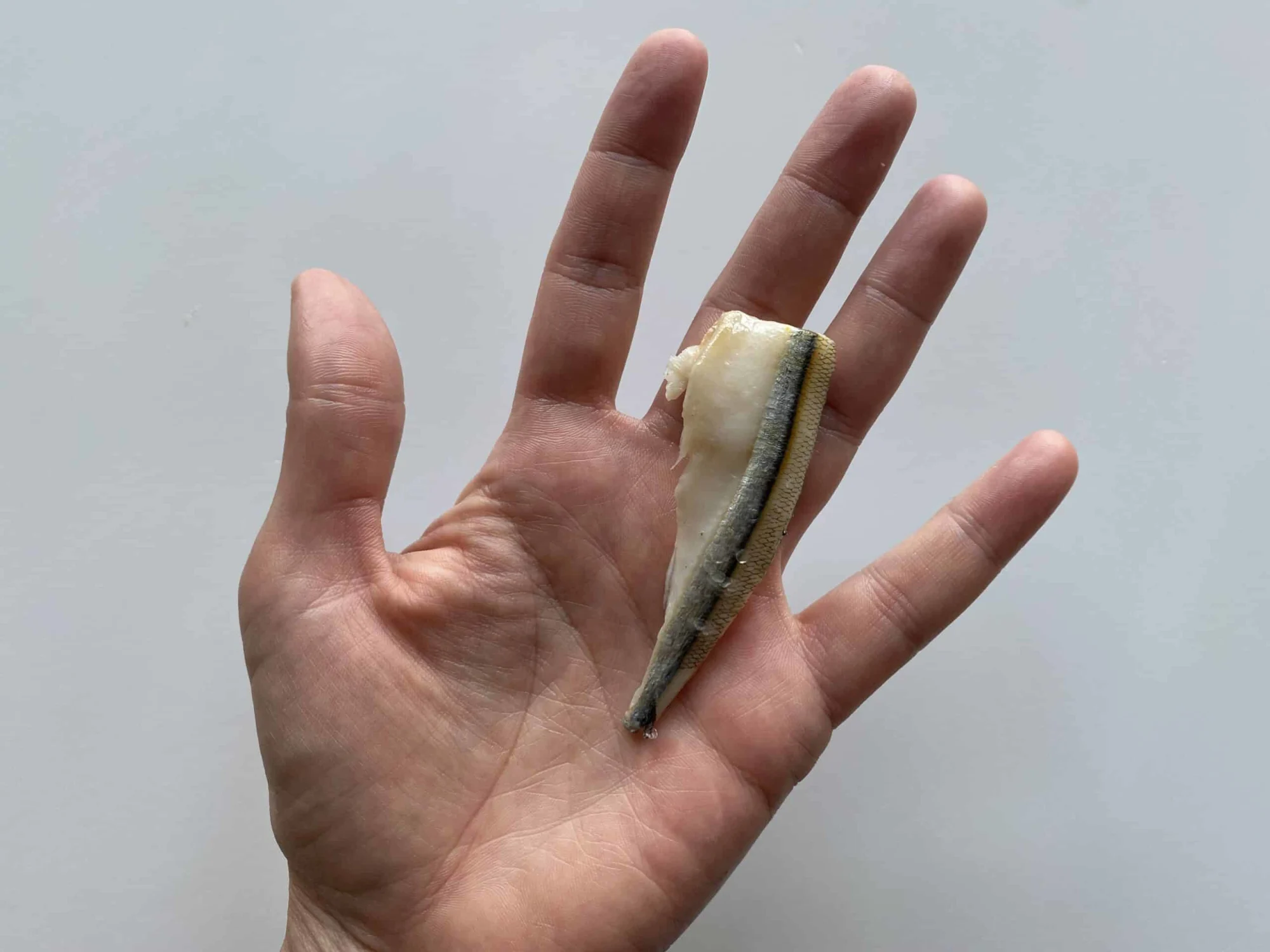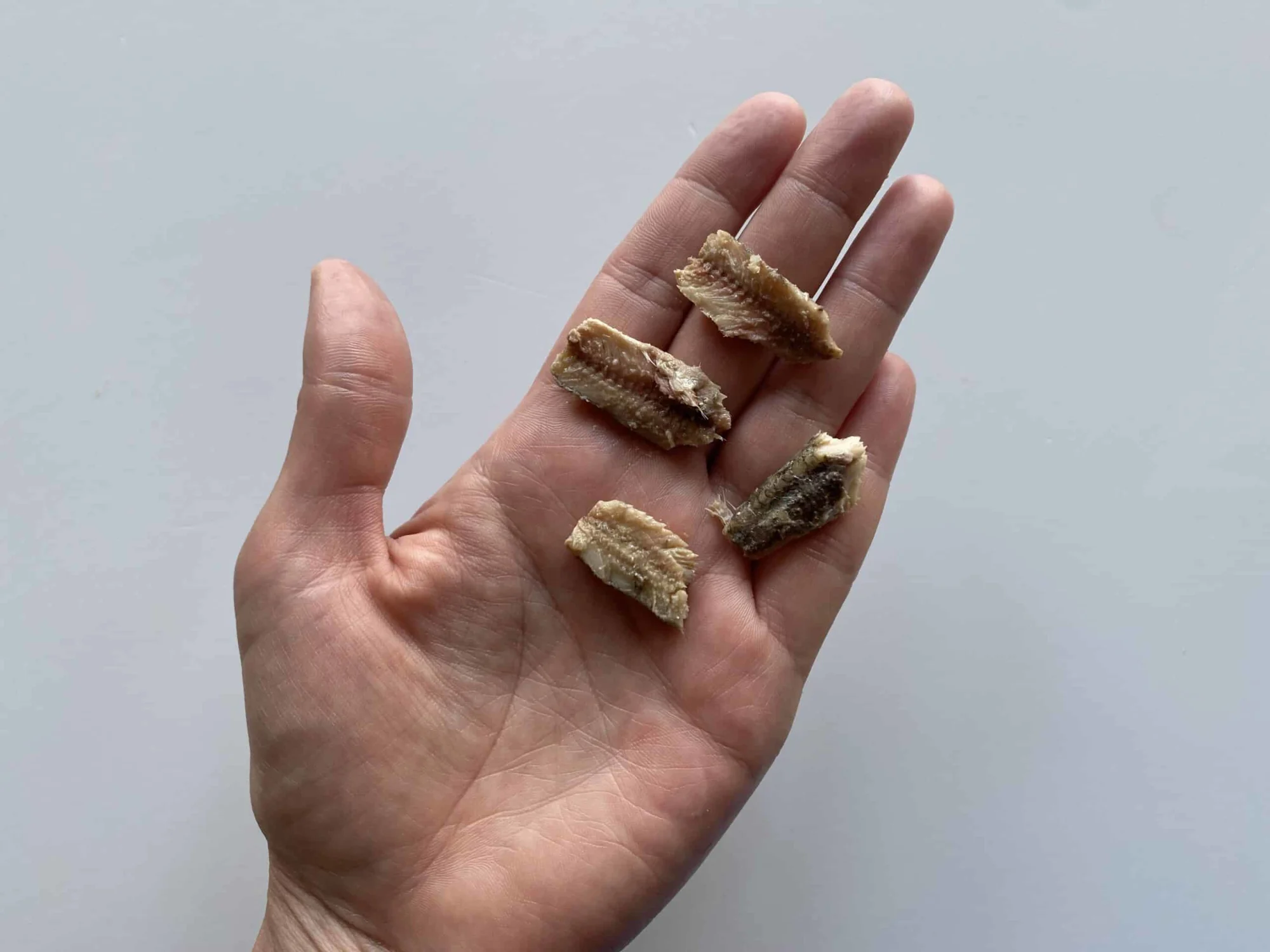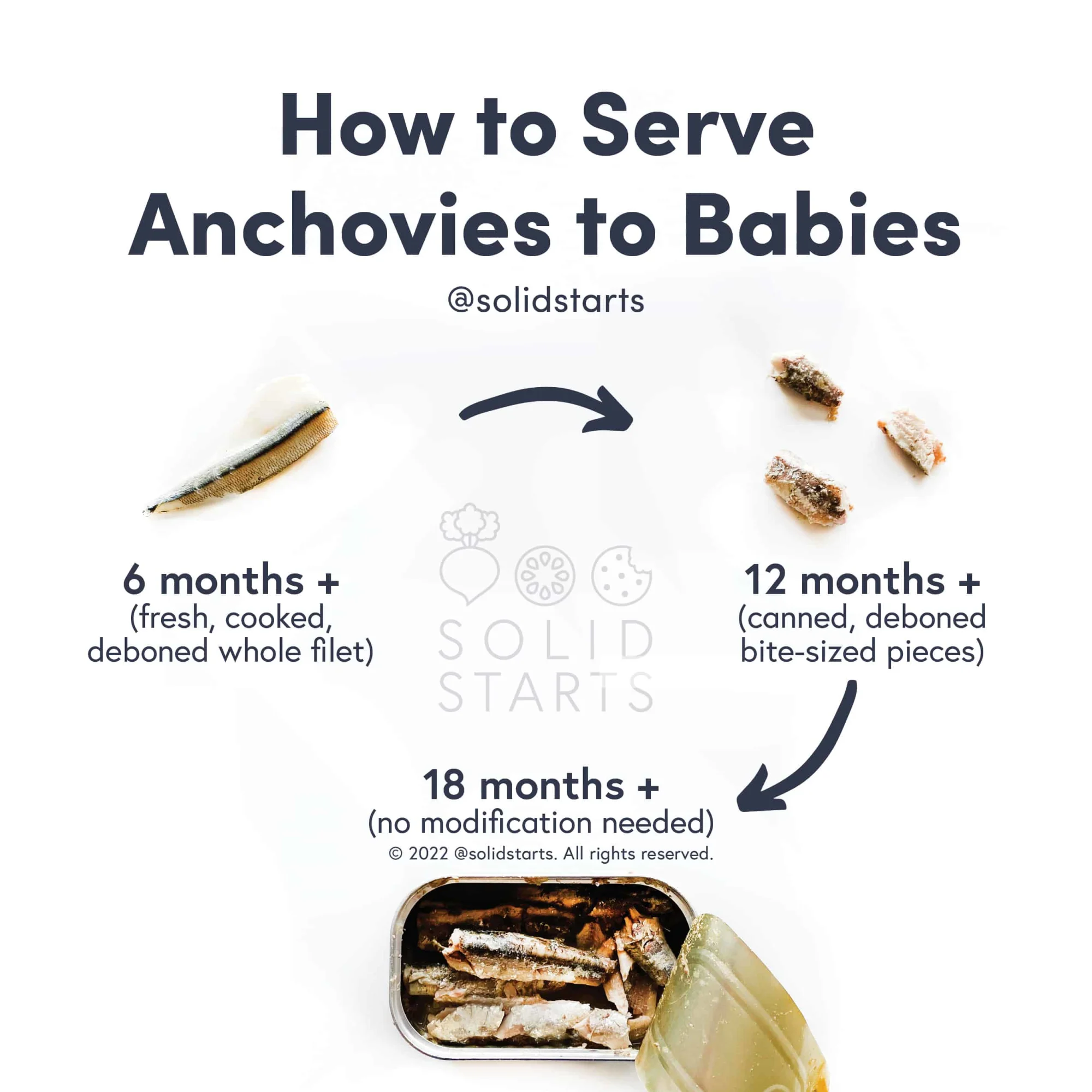Acceda a la base de datos First Foods® en Solid Starts App.
Leer másAnchoas
Pescado
Sugerencia de edades
6 meses
Alto contenido de hierro
Sí
Alérgeno común
Sí

When can babies have anchovies?
¡Lo sentimos, esta página aún no está disponible en español! Estamos trabajando tan rápido como podemos para traducir todo nuestro contenido, gracias por tu paciencia y apoyo.
Anchovies, when cooked, may be introduced as soon as baby is ready to start solids, which is generally around 6 months of age. Compared with other fish, anchovies tend to be low in mercury.
Anchovies are small fish that provide a vital food source for humans and oceanic creatures alike. There are more than 140 species around the world—from the Atlantic and Pacific Oceans, to the Black and Mediterranean Seas. For centuries, diverse cultures have eaten fresh anchovies as a delicacy. Preserved anchovies are often packed in salt, which leaches liquid from the anchovy and infuses the fish with rich, savory flavor.
How do you serve anchovies to babies?
Cada bebé se desarrolla a su propio ritmo, y las sugerencias que ofrecemos sobre cómo cortar o preparar determinados alimentos son generalizaciones para una amplia audiencia.
6 months old +:
Offer preserved anchovy on its own, mixed into sauce, or mashed into grains, vegetables, or yogurt. The majority of preserved anchovies are well-cooked, and there is no need to remove the skin and bones; the packaging process softens the bones and skin to a point where they are easily mashed as baby munches. If you happen to have access to fresh anchovies, make sure that they are well-cooked and bones are removed before offering them to baby.
9 months old +:
Offer a whole preserved anchovy or break it into bite-sized pieces for baby to practice picking up with their developing pincer grasp. Alternatively, continue to use preserved anchovy to flavor dishes to share with baby like cooked vegetables, pasta sauce, and roasted meats. There is no need to remove the bones and skin of preserved anchovies; the majority of preserved anchovies are well-cooked and the packaging process softens the bones and skin to a point where they are easily mashed as baby munches. If you happen to have access to fresh anchovies, make sure that they are well-cooked and bones are removed before offering them to baby.
12 months old +:
Continue to offer a whole preserved anchovy or break it into bite-sized pieces and offer to the child along with a fork for utensil practice.


¡Lo sentimos, esta página aún no está disponible en español! Estamos trabajando tan rápido como podemos para traducir todo nuestro contenido, gracias por tu paciencia y apoyo.
Videos
Are anchovies a choking hazard for babies?
No. Cooked or canned anchovies present a low risk when safely prepared for a child’s age and developmental ability, though, in theory, an individual could choke on any food. The bones in canned anchovies have been softened and made edible by the canning process and do not need to be removed before serving. But the bones in freshly cooked fish do pose a risk of getting stuck in the mouth, throat, or esophagus. To reduce this risk, take care to remove the bones from cooked fish, and prepare and serve anchovies in an age-appropriate way as described in the How to Serve section. As always, make sure you create a safe eating environment and stay within an arm’s reach of baby during meals.
Learn the signs of choking and gagging and more about choking first aid in our free guides, Infant Rescue and Toddler Rescue.
Is anchovy a common allergen?
Yes. Finned fish are classified as a common allergen by the World Health Organization. It’s estimated that only 0.2% of people are allergic to finned fish worldwide, and the prevalence of fish allergies in children, while variable, is even less than in adults. About 40% of people with finned fish allergies don’t experience their first allergic reaction until adulthood. Unfortunately, most individuals who are allergic to finned fish do not outgrow the allergy.
Some individuals with finned fish allergy may react from inhaling proteins that become aerosolized when cooking fish. If this is the case for baby, you may wish to avoid cooking fish in the household when baby is present.
Around 50% of individuals with one finned fish allergy will react to another fish as well. This is because the major allergen in finned fish, beta-parvalbumin, is present in most fish, regardless of species. Due to cross-contamination and mislabeling of fish, allergists often recommend that those allergic to one species of finned fish avoid all finned fish until meeting with an allergist to determine which fish might be safely introduced into the diet. This is an individualized recommendation, so be sure to confirm with your allergist before offering other finned fish if baby is allergic to anchovy.
Finned fish are a known trigger of food protein-induced enterocolitis syndrome, also known as FPIES. FPIES is a delayed allergy to food protein which causes the sudden onset of repetitive vomiting and diarrhea to begin a few hours after ingestion. Left untreated, the reaction can result in significant dehydration. Unlike other food allergens, FPIES to finned fish may not present until later in life, and tends to be life-long.
Lastly, a note on scombroid poisoning, which is sometimes mistaken for a fish allergy. Scombroid poisoning is a type of food poisoning that occurs when someone eats fish that has been improperly refrigerated. This allows a large amount of histamine to build up in the fish. When consumed, this large load of histamine can cause symptoms that mimic those of an allergic reaction, causing some people to believe that they have developed a finned fish allergy, even if they are not allergic. Ensuring that fish has been stored at adequately cool temperatures can minimize the risk of such a reaction.
If you suspect baby may be allergic to fish, make an appointment with an allergist before introducing anchovy. As with all common allergens, introduce anchovy in small amounts and watch closely as baby eats to see if any adverse reaction occurs. If all goes well, gradually increase the serving size over time. Once common food allergens are successfully introduced, it is recommended to keep them in the diet regularly (twice weekly, if possible). However, this doesn’t mean that each different fish species must be offered multiple times a week. Finned fish share the same major proteins, so it is perfectly acceptable to rotate finned fish varieties according to availability and preference.
Are anchovies healthy for babies?
Yes. Anchovies are low in mercury and offer protein, fat, iron, zinc, and choline, as well as vitamins B6, B12, and E. They’re also an excellent source of omega-3 fatty acids, particularly DHA, which support baby’s vision and brain development. Together, these nutrients support baby’s growth, energy for play, red blood cells, taste perception, immunity, nervous system, and metabolism.
Some anchovies are preserved in salt; these are fine to offer on occasion as part of a varied diet. Sharing meals, even if those meals contain some salt, can bring baby into their family food culture as soon as they are ready to start solids, which has other benefits. Family meals are opportunities for baby to explore a wide variety of food, practice eating food with different colors, flavors, and textures, and get comfortable with food that you like to eat.
¿Qué utensilios necesito para empezar?
¡Ninguno! Sirve los alimentos sólidos directamente en la bandeja, plato o tazón del/a bebé y luego deja que el/la bebé explore con las manos. Si lo deseas, tenga una cuchara o un tenedor disponibles para ayudarlo/a a familiarizarse con los utensilios, pero no se espera que adquiera las habilidades para usarlos hasta que sea un poco mayor.
¿Cuánta comida debo servirle al/a bebé?
Al comienzo, ofrece una pequeña cantidad y confía en que tu bebé sabe cómo mostrar interés si quiere más haciendo ruidos, gestos, o gritando o extendiendo la mano. Ten en cuenta que la mayoría de los bebés entre 6 y 9 meses de edad no consumen muchos alimentos sólidos al principio. Para los bebés de entre 10 y 12 meses de edad, enfócate en ofrecer el equivalente a una comida equilibrada para adultos, pero con porciones más pequeñas. Pon atención a las señales que te da el/la niño/a: cuando el/la bebé te muestre que desea “más”, ofrécele más comida. Cuando el/la bebé muestre señales de “ya terminé”, para de ofrecerle comida.
Nuestro equipo
Escrito por
Consejos de expertos directo a tu bandeja de entrada
¡Suscríbete y recibe correos semanales con recetas, consejos y más!
Copyright © 2025 • Solid Starts Inc






